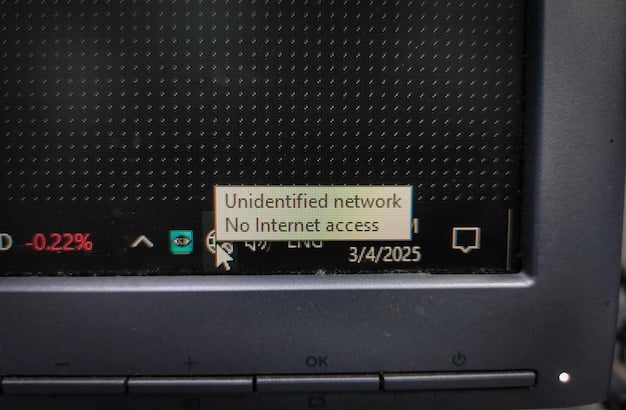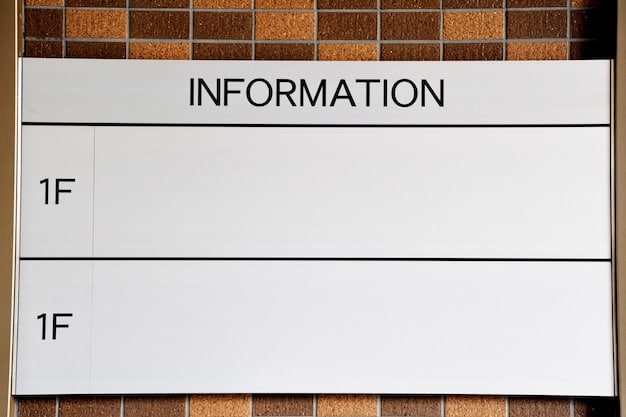Deadline Looms: Broadcasters Must Meet Closed Captioning Rules by 2024

Broadcasters in the US must comply with the updated closed captioning rules set by the FCC by December 31, 2024, ensuring accessibility for viewers with hearing impairments and adhering to the Twenty-First Century Communications and Video Accessibility Act of 2010.
The clock is ticking for broadcasters across the United States. The **Deadline Approaching: Broadcasters Must Comply with New Closed Captioning Rules by December 31, 2024**, set by the Federal Communications Commission (FCC). Is your station ready?
Understanding the FCC Closed Captioning Mandate
The FCC’s closed captioning rules are designed to ensure that video programming is accessible to individuals with hearing disabilities. These regulations stem from the Twenty-First Century Communications and Video Accessibility Act (CVAA) of 2010 which aimed to update communication laws to reflect advancements in technology and the evolving needs of citizens with disabilities.
Key Objectives of the FCC Regulations
The primary goal is to make television and online video content accessible to a wider audience. This involves providing accurate, synchronous, and complete closed captions. The regulations aim to improve the quality and availability of captioning services.
Who is Affected by These Rules?
These rules affect a broad range of entities, including traditional television broadcasters, cable operators, satellite providers, and online video distributors. Any entity that provides video programming for distribution to the public is generally required to comply. It is important to ascertain what requirements are placed on your media service.
- Traditional television broadcasters
- Cable operators
- Satellite providers
- Online video distributors
Compliance with these regulations is not just a legal requirement; it’s an ethical one. By providing closed captioning, broadcasters ensure that their content is accessible to a significant portion of the population, including those with hearing impairments. This inclusive approach is crucial for fostering a diverse and equitable media landscape.
The Specifics of the New Closed Captioning Rules
The FCC has outlined several specific requirements that broadcasters must adhere to when providing closed captioning. These rules cover various aspects of captioning, including accuracy, synchronization, completeness, and placement.
Accuracy and Synchronization
Accuracy is ensuring that the captions accurately reflect the audio content of the program. Synchronization means that the captions appear on the screen at the same time as the corresponding audio. This is necessary to create a seamless viewing experience for all.
Completeness and Placement
Completeness involves captioning the entire program, from start to finish, including all dialogue, narration, and other relevant audio cues. Placement refers to the position of the captions on the screen, which should be easily readable and not obstruct important visual elements.
The specific technical standards and guidelines for closed captioning are detailed in the FCC’s regulations. These standards address aspects such as caption timing, font size, color, and formatting. Broadcasters are encouraged to familiarize themselves with these standards to ensure compliance.
Understanding the 2024 Deadline
The December 31, 2024, deadline is a crucial date for broadcasters. By this date, all covered entities must be in full compliance with the updated closed captioning rules. Non-compliance can result in penalties, including fines and other enforcement actions.
Why the Deadline Matters
The FCC has set this deadline to ensure that broadcasters prioritize accessibility and take the necessary steps to implement compliant closed captioning practices. The deadline provides a clear timeframe for broadcasters to make the required changes.
Preparing for the Deadline: A Step-by-Step Guide
Broadcasters should take a proactive approach to prepare for the compliance deadline. This involves conducting a thorough assessment of their current captioning practices, identifying areas for improvement, and implementing the necessary changes.
- Assess your current captioning practices
- Identify areas for improvement
- Implement necessary changes
This process may involve investing in new captioning technology, training staff on best practices, and establishing quality control procedures to ensure ongoing compliance with the FCC’s regulations. Make sure to be prepared ahead of time.

Best Practices for Ensuring Compliance
To ensure compliance with the FCC’s closed captioning rules, broadcasters should adopt best practices for creating and delivering captions. These best practices cover various aspects of the captioning process, from scripting to post-production.
Captioning Workflows and Technology
Implementing efficient captioning workflows and investing in appropriate technology are essential steps. This may involve using professional captioning software, hiring trained captioners, and establishing clear communication channels between production teams and captioning providers. Many new tools are now available.
Quality Control and Review Processes
Quality control is an important aspect of ensuring accurate and reliable captions. Broadcasters should implement review processes to verify the accuracy, synchronization, and completeness of captions before they are broadcast. This may involve manual review by trained professionals as well as automated quality control tools.
Staying Up-to-Date with FCC Regulations
The FCC’s closed captioning rules are subject to change, so broadcasters should stay informed about any updates or revisions. Joining industry associations, attending conferences, and subscribing to relevant publications can help broadcasters stay informed about regulatory developments.
The Implications of Non-Compliance
Failure to comply with the FCC’s closed captioning rules can have serious consequences for broadcasters. Non-compliance can result in penalties, including fines, license revocation, and other enforcement actions. The FCC takes violations of its accessibility regulations seriously and is committed to ensuring that broadcasters meet their obligations.
Financial Penalties and Legal Repercussions
Financial penalties for non-compliance can be significant, depending on the nature and severity of the violation. In addition to fines, broadcasters may be subject to legal action by individuals or groups who have been harmed by the lack of accessible programming.
Reputational Damage and Loss of Viewership
Non-compliance can also result in reputational damage and loss of viewership. Viewers with hearing disabilities and their advocates may boycott broadcasters who fail to provide accessible programming, leading to a decline in ratings and advertising revenue.
Avoiding Non-Compliance: A Proactive Approach
Broadcasters can avoid the negative consequences of non-compliance by taking a proactive approach to accessibility. This involves investing in captioning technology, training staff, and implementing quality control procedures.
Resources for Broadcasters
Broadcasters have access to a variety of resources to assist them in complying with the FCC’s closed captioning rules. These resources include guidance documents, training materials, and technical assistance services.
FCC Guidelines and Best Practices
The FCC provides comprehensive guidelines and best practices for closed captioning on its website. These resources cover various aspects of captioning, including technical standards, quality control procedures, and accessibility requirements. The FCC’s site should be your first stop to answering any question you have regarding this topic.
Industry Associations and Organizations
Several industry associations and organizations offer training, technical assistance, and advocacy services to broadcasters. These organizations can help broadcasters stay informed about regulatory developments, share best practices, and connect with other professionals in the field. These are great place to network, get advice and find services.

Captioning Technology Vendors and Service Providers
Broadcasters can partner with captioning technology vendors and service providers to streamline the captioning process. These vendors and providers offer a range of solutions, including captioning software, transcription services, and quality control tools. Choosing the right one is a big first step.
| Key Point | Brief Description |
|---|---|
| 🗓️ Compliance Deadline | Broadcasters must comply with FCC closed captioning rules by December 31, 2024. |
| ✅ Key Requirements | Captions must be accurate, synchronous, complete, and properly placed. |
| ⚖️ Consequences | Non-compliance can result in fines, legal action, and reputational damage. |
| 🛠️ Resources | FCC guidelines, industry associations, and captioning service providers are available. |
Frequently Asked Questions
▼
The primary purpose is to ensure that video programming is accessible to individuals with hearing disabilities, promoting inclusivity and equal access to information and entertainment.
▼
Traditional television broadcasters, cable operators, satellite providers, and online video distributors that provide video programming for distribution to the public are required to comply.
▼
Non-compliance can result in significant financial penalties, legal action, reputational damage, and a loss of viewership due to boycotts from disability advocacy groups.
▼
Compliant captions must be accurate, meaning they precisely reflect the audio content. They also need to be synchronous, appearing on-screen at the same time as the corresponding audio.
▼
The FCC website provides guidelines and best practices. Industry associations and captioning technology vendors also offer support and assistance for ensuring compliance with the rules.
Conclusion
As the December 31, 2024, deadline quickly approaches, it is imperative that all broadcasters take the necessary steps to ensure full compliance with the FCC’s closed captioning rules. By adhering to these regulations, broadcasters can provide accessible programming for all viewers, avoid potential penalties, and foster a more inclusive media landscape.





